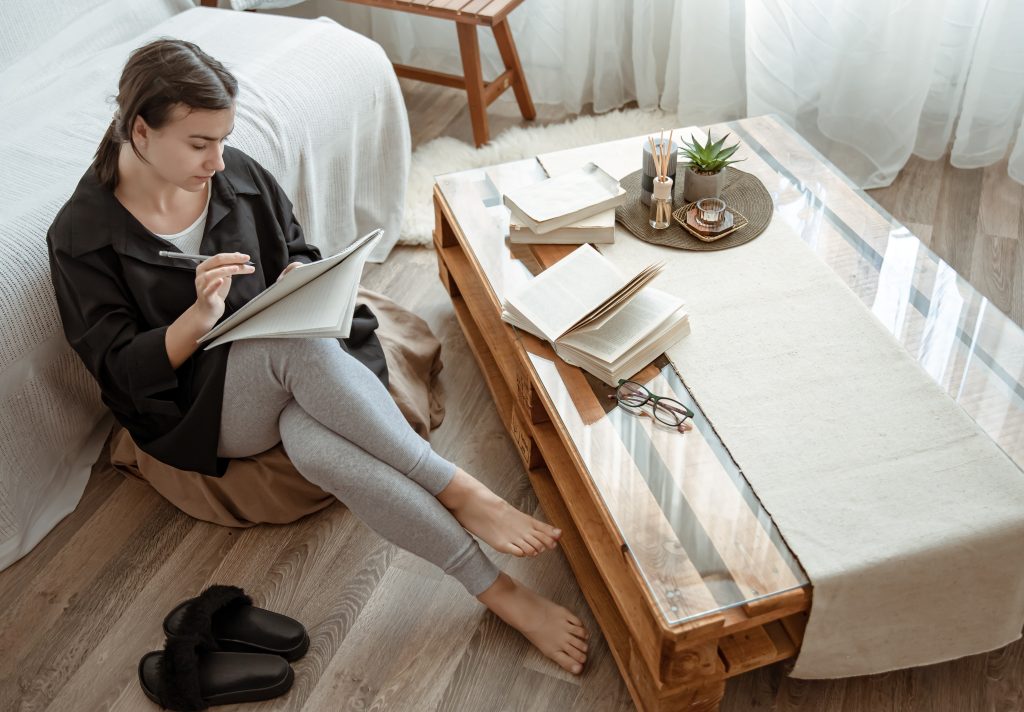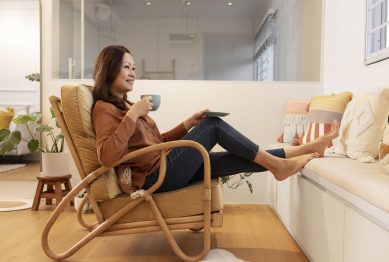In 2025, minimalist living isn’t just a design choice—it’s a path to clarity, calm, and personal meaning. The new wave of minimalist living ideas for clutter-free homes draws on simplicity with warmth and purpose. People now want homes that feel intentional and personal, not bare or impersonal. This article explores what’s trending in 2025 and offers practical steps to adopt a modern, calming minimalist lifestyle.

Why Minimalist Living Ideas for Clutter-Free Homes Matter Today
Minimalism has moved beyond clean lines and empty rooms. New trends show that the best minimalist spaces feel inviting, curated, and filled with character. Experts encourage warm minimalism, adding texture, neutral tones, and natural elements for spaces that feel relaxed and lived-in.
Science confirms that clutter raises stress hormone levels like cortisol and disrupts focus, while tidy environments help calm the mind. A clutter-free bedroom even supports better rest and mental clarity. In a time when hybrid work and home-based living dominate, people are looking for homes that reduce stress, improve focus, and feel restorative.
Minimalism in 2025 is no longer about cold aesthetics—it’s about creating a space that supports well-being and reflects your values.
Trending Minimalist Living Ideas for Clutter-Free Homes
Warm Minimalism: Cozy Simplicity
Minimalism in 2025 blends simplicity with comfort. Think clean lines paired with soft textures like wool and linen, along with earthy tones such as terracotta, muted olive, or sand. This combination offers a serene setting that feels calm but not clinical. Designers are shifting toward homes that feel both sleek and nurturing, where you can unwind as easily as you can focus.
Clutter-Free with Character
Minimalist living now celebrates select, meaningful pieces that spark joy or tell a story. Instead of filling every surface, designers recommend choosing a bold sculpture or abstract artwork to serve as an elegant focal point. The shift emphasizes that a clutter-free home doesn’t have to mean empty—it can mean intentional. Every item should have a place and a purpose, which also reduces the temptation to buy impulsively.
Sustainable Minimalism
Today’s minimalism prioritizes sustainable choices. People select high-quality, durable furniture from eco-friendly materials rather than following disposable trends. Reclaimed wood, bamboo, and recycled metal are increasingly common in home design. Minimalist living aligns naturally with sustainable practices because it focuses on mindful consumption, keeping only what adds long-term value while reducing environmental waste.
Multifunctional Furniture
Living clutter-free often means making the most of limited space. Pieces like sofa beds, extendable dining tables, or hidden storage units keep homes tidy while serving multiple purposes. For example, a coffee table that doubles as a storage chest reduces visible clutter without sacrificing design. These pieces are particularly relevant in apartments and smaller homes where every square foot counts.
The 90/90 Rule to Declutter
The 90/90 Rule asks: “Have I used it in the last 90 days?” and “Will I use it in the next 90 days?” If the answer is no, it’s time to let it go. This guideline helps remove guesswork from clutter-clearing decisions while respecting sentimental or seasonal items. By applying it regularly, you build a habit of assessing what truly matters and what is just taking up space.
Practical Guide: How to Embrace Minimalist Living
Adopting minimalist living ideas for clutter-free homes can feel overwhelming at first, but starting small makes it manageable. Here’s a step-by-step approach:
- Start Small
Begin with a single drawer or tabletop. Remove what doesn’t add meaning or function and assess how you feel afterward. The quick win creates momentum and motivation to move on to larger areas. - Focus on Function and Joy
Keep items that serve a purpose or bring happiness. A favorite vase, a book you revisit, or a practical kitchen tool deserves space. Items that create guilt or remain unused can be donated or recycled. - Add Layered Textures
Minimalism doesn’t mean flat. Add warmth with a soft rug, woven throw, or neutral cushion. These small touches keep the space visually appealing while maintaining simplicity. - Select One Statement Piece
Choose a single artwork, plant, or sculpture to anchor the room visually and emotionally. This prevents clutter while still allowing self-expression. - Upgrade to Quality
Swap cheap items for durable, multipurpose ones. A well-made wooden piece looks better, lasts longer, and avoids the cycle of constant replacement. - Apply the 90/90 Rule Regularly
Minimalism isn’t a one-time act but a lifestyle. Revisit your belongings every season to prevent clutter from creeping back into your home. - Incorporate Natural Elements
Even one plant, a stone bowl, or a rattan chair can add vitality without creating clutter. Nature-based textures bring calm and balance to modern interiors. - Digital Decluttering
Minimalism extends beyond physical spaces. Organizing digital files, unsubscribing from emails, and keeping your desktop clear can reduce mental clutter. In today’s remote-working world, a tidy digital environment contributes just as much to peace of mind as a tidy living room.
Benefits of These Minimalist Living Ideas
The impact of adopting minimalist living ideas for clutter-free homes reaches beyond aesthetics:
- Less Stress: Decluttered spaces calm the mind and reduce anxiety, helping you feel more at ease in your environment.
- Better Focus: When your surroundings aren’t competing for attention, productivity and concentration increase.
- Improved Well-Being: A clutter-free bedroom encourages deeper rest, while a simplified kitchen supports healthier eating habits.
- Sustainable Living: By purchasing fewer, higher-quality items, you reduce waste and help protect the environment.
- Timeless Style: Thoughtful minimalism avoids passing fads and remains visually appealing year after year.
Minimalism That Feels Personal
Minimalism in 2025 isn’t about removing personality—it’s about curating it. The misconception that minimal homes are cold and sterile is fading. Instead, minimalism is now viewed as a tool for self-expression. By intentionally choosing what stays, you allow your values and personality to shine more clearly. Whether it’s displaying a single framed photograph or incorporating a piece of handmade pottery, minimalism makes room for meaningful details rather than crowding them out.
Minimalism also adapts to lifestyle needs. Families can apply it by creating play zones with smart storage for toys, while professionals can design home offices that feel energizing but free of distractions. The versatility of this lifestyle ensures that anyone can find a version that works for them.
Conclusion
Minimalist living ideas for clutter-free homes in 2025 are about thriving in simplicity rather than stripping life bare. With warm colors, thoughtful purchases, multifunctional furniture, and intentional décor, you can create a home that soothes the senses and supports daily routines. Whether you start by decluttering one drawer or rethinking how furniture serves your needs, each step brings you closer to a space that feels restorative, calm, and sustainable.
The shift toward warm, sustainable minimalism shows that the trend isn’t about living with less for its own sake—it’s about making space for what truly matters. By combining comfort, character, and mindfulness, minimalist living becomes a timeless approach to designing a home that supports both your well-being and your lifestyle.
References
- The Top 2025 Interior Design Trends, https://designerandthediyer.com
- 13 Minimalist Living Room Ideas That Are Simply Chic, https://www.architecturaldigest.com
- 6 Trends Defining Home Décor in 2025, https://www.whowhatwear.com









